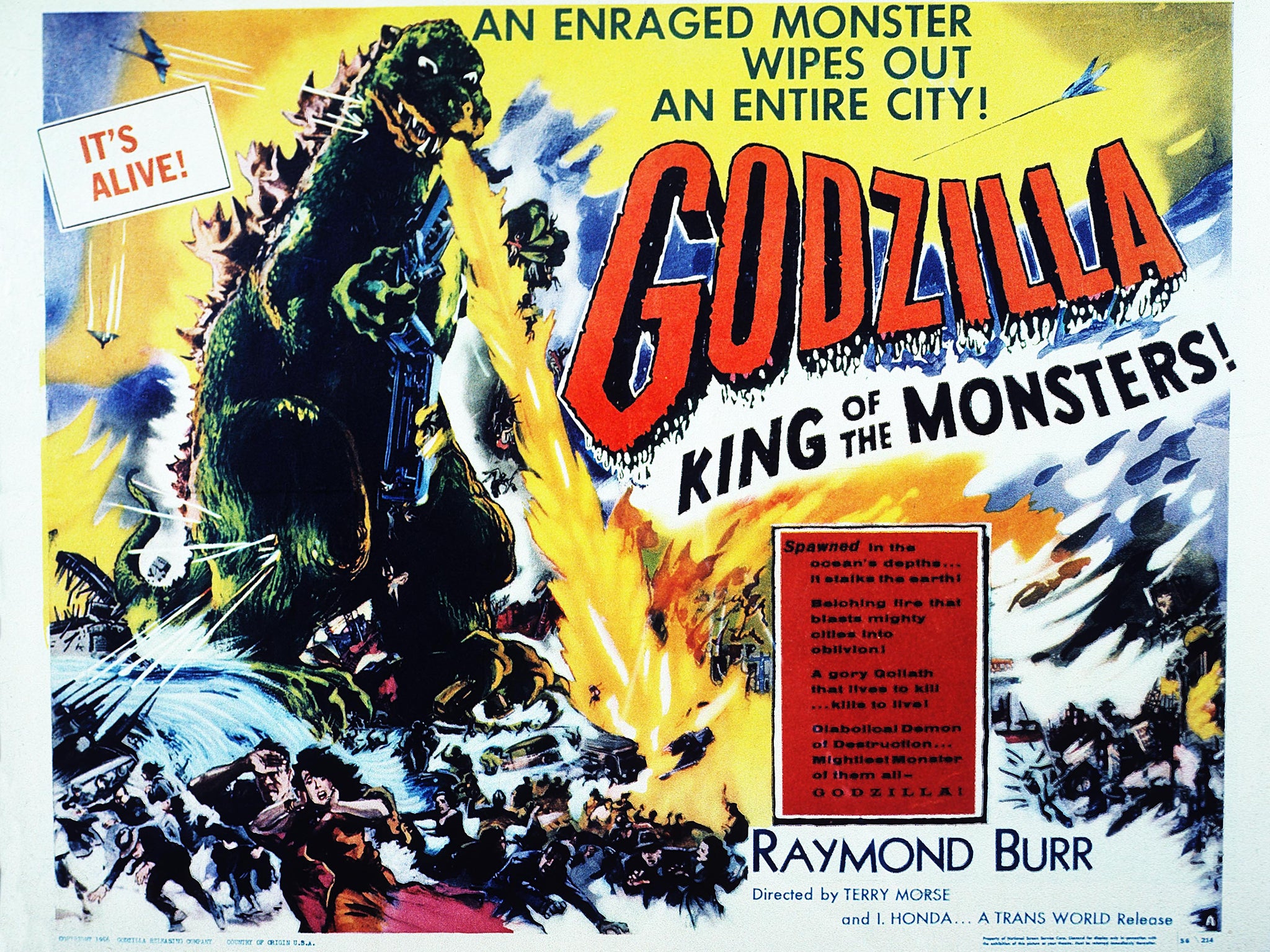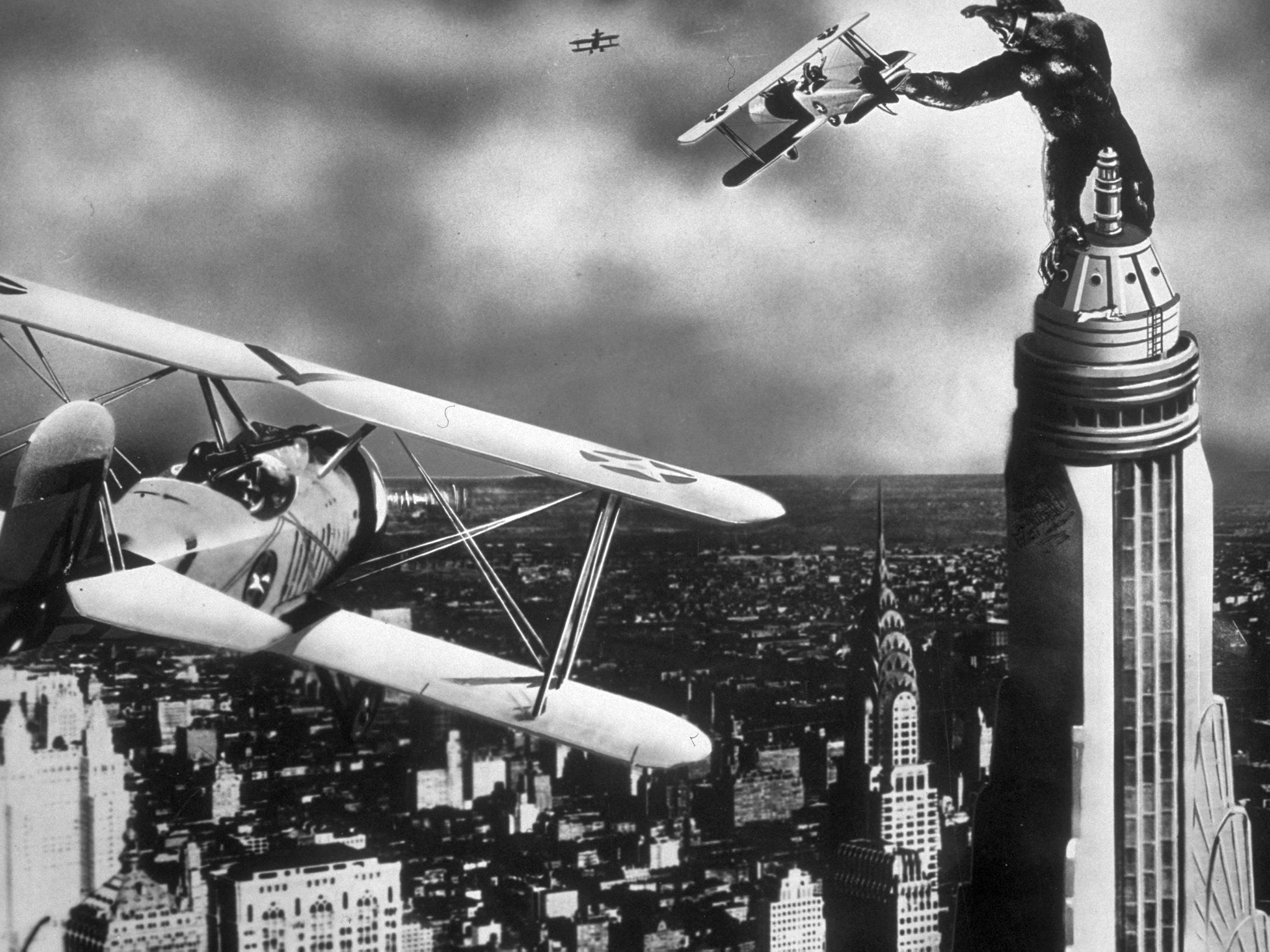Godzilla, Kong and Mothra, oh my: The stories of Japan’s kaiju monsters are far from over
Our appetite for destruction by way of rampaging giant beasts shows no signs of abating as Godzilla makes a return to the cinema. David Barnett likes big monsters, and he cannot lie


Happy birthday to the granddaddy of gigantic monsters, Godzilla. But though he turns 65 this year, don’t expect the flame-breathing mutant lizard to be picking up his bus pass any time soon… he’s more likely to be picking up the entire bus and eating it whole, driver and passengers too.
At the end of May the big fella returns in Godzilla: King of the Monsters, and this will be his 35th cinematic outing since he debuted in his native Japan in 1954. This movie follows on from the 2014 film Godzilla, which kick-started production company Legendary Entertainment’s so-called MonsterVerse, a series of interconnected movies that has also included 2017’s Kong: Skull Island. Think the Marvel Cinematic Universe, but with rampaging gigantic creatures rather than superheroes. A fourth film – somewhat, inevitably, Godzilla vs Kong – is already slated for release in 2020.
Of those 35 Godzilla movies, only three – the two mentioned above, and the 1998 effort directed by Roland Emmerich and starring Matthew Broderick – have been made by Hollywood. The rest have come out of Toho Studios in Japan, and have been recognised by the Guinness World Records as the longest continually running movie franchise in film history.
Toho Studios, based in Tokyo, began life as a theatre production company in the 1930s, then moved into film and TV, and is Japan’s biggest production and distribution company today. Although its output is vast, it is best known in the west for its movies featuring Godzilla, alongside the other giant monsters that have become known as Toho’s Big Five money-spinners: Mothra, Rodan, King Ghidorah and Mechagodzilla.
Mothra, as you might have guessed, is a gigantic moth. Mechagodzilla, a robotic version of Godzilla. Rodan is a huge, pterodactyl-type beast, and King Ghidorah a three-headed monster with bat wings.
In Japan, these giant monsters are known as kaiju, a term that has seeped into western usage and was even used as the generic term for the huge monsters in Hollywood’s Pacific Rim franchise. Godzilla was the first of these films, in 1954, but we so very nearly got a much different iconic beast in director Ishirō Honda’s movie… special effects director Eiji Tsuburaya apparently wanted the titular beast to be a gigantic octopus rather than the dinosaur-esque creature we have come to know and love.
According to Hector Garcia in his book A Geek in Japan, Godzilla would “gradually become one of Japan’s most recognisable international symbols. Halfway through the 1960s, rival studios created Gamera to compete with Godzilla’s popularity. Gamera is a gigantic bipedal turtle with great destructive power thanks to its mighty flame-throwing breath.”
Garcia adds: “The passion for gigantic mutant creatures kept growing, with the appearance of many more series and movies with gigantic monsters in the leading roles. The ceaseless production of this kind of movie ended in a new genre known as kaiju.”
Toho Studios didn’t exactly invent the monster movie, of course. A year before Godzilla first appeared – and possibly an influence on Toho’s decision to make the first film – Hollywood released The Beast from 20,000 Fathoms, loosely based on a Ray Bradbury story and about a dinosaur (a fictional Rhedosaurus) woken from its slumber in the Arctic Circle due to atomic bomb testing.
But 20 years prior to that, the movie that started the whole big monster genre was made in Hollywood: King Kong, in which a monstrous ape is taken from its hidden island home and put on display in New York, where it captures a beautiful woman (played by Fay Wray) and meets its doom atop the Empire State Building. Featuring what was at the time astonishing stop-motion animation work by Willis O’Brien, the movie wowed and shocked audiences around the world.
Kit Cox is the author of several monster-themed novels (a genre he has dubbed “monsterpunk”) and gives talks about the history of monsters in cinema and literature. He well remembers his first meeting with the mighty Kong.

“I watched it on my grandparents’ black and white TV in the early Seventies so the lack of colour wasn’t important,” he recalls. “I must have been about five and I remember my dad telling me not to get scared. My grandparents were Irish and watched the kind of television my English Dad didn’t really allow us to watch and it was always on. For some reason I remember this being special, my Dad watched it too and we stayed to the end with everyone quietly watching. I had questions of my own because I was hooked and truly believed there were giant gorillas somewhere in the world.”
The Beast from 20,000 Fathoms had been awakened by atomic bomb tests, and a slew of monster movies out of Hollywood in the 1950s preyed on that decade’s particular fear of nuclear conflagration. Which is why when Japan began making monster movies, they had something of an edge; they had lived through that which America could only fear.
Hector Garcia writes: “Godzilla is a mutant monster, the result of some failed experiments with hydrogen bombs – recalling the Hiroshima and Nagasaki catastrophes – that yearns to destroy.”
Garcia’s use of “catastrophes” to describe Hiroshima and Nagasaki is perhaps curious, lending them an almost accidental quality. The atomic bombs that were exploded over those cities by the Americans, to bring about the end of the Second World War, were no accident. Estimates say that 140,000 died in Hiroshima and 70,000 in Nagasaki. Those events were only nine years before Godzilla was released.
Cox says: “The atomic age was one of the fears for Japan, they are the only place to have been attacked with atomic bombs and not once but twice. Monster movies always play to a society’s fears, zombies in the west because we live in fear of disease, influx of foreign invaders and science gone mad, or slasher movies because we fear the strange neighbour. Japan is a traditional country surrounded by larger, more powerful countries looking to destroy what they have.”
But while Japan perhaps had more of a claim on monsters born from the nuclear genie getting out of the bottle than anywhere else, they also have a much more venerable tradition of kaiju, beyond coining the term that has passed into common currency. Japanese folkore is redolent with monsters and beasts, from the Gashadokuro, a gigantic beast made from the bones of starvation victims, to the Tsuchigumo, which has the body of a tiger, spider legs, and a demonic face. There are suggestions that the term kaiju, literally meaning “strange beast”, dates back to ancient Japan and its earliest mythology.

After watching King Kong, the young Kit Cox embarked on a love affair with monsters, mainlining movies such as Jason and the Argonauts, The Seventh Voyage of Sinbad, and Clash of the Titans. And then he found the Japanese movies.
“Discovering Toho Studios was like unearthing the grail,” he says. “Godzilla was shown infrequently at night but I had managed to get a black and white portable TV from a jumble sale so was able to catch it one night after I was supposed to have gone to bed. Luckily video was now a thing and if you knew the right people you could watch generally undubbed or unsubtitled films from Japan (during the school holidays).
“Not being able to understand was most of the fun, you made up your own stories. Then the Golden Goose awards were created, an Oscars-like award for the worst or weirdest films, and suddenly the badly dubbed/subtitled Toho films were on the TV.
“The first I saw of these was Godzilla vs the Smog Monster, or Hedorah to those in the know, and it was awesome. As a fan you realised that everything we did in the west was either a rip-off of Toho or discovered that Toho had taken western monsters and somehow made them better.”
Another Japanese word that is gaining traction in the west is tokuhatsu, which refers to TV shows featuring brightly-clad superheroes such as Ultraman and the Power Rangers, often fighting kaiju… which, during the genre’s heyday in the 1960s and 1970s, were often actors in suits stamping over miniature cardboard buildings.
Cox says: “Big monsters were cheap special effects to Japanese cinema and TV, you built a small model city, you dressed a guy up in a rubber suit and he went at it. If you couldn’t afford a model city you dressed two guys up went to a field and they went at each other. The CGI of modern big monster movies is wonderful but you will never get past the simplicity of just having two rubber-clad guys duke it out in a town of painted boxes. Cheap means you can make more films for your money and that means you get more return.
“The costumes from Toho Studios were repurposed again and again and appeared on TV in Ultraman. Toho was one of those wonderfully subversive things. Like Romero’s zombie movies in the States they somehow were seen as flippant nonsense by the authorities and not open to the scrutiny of other films. From the very first Godzilla movie Toho was sliding political and social rhetoric unchallenged past the censors. They weren’t just throwaway monster movies, they were getting voices and radical opinions heard by sizeable Japanese audiences.
“Toho Studios was a giant monster with a hidden message but at the same time their global success with monster movies allowed them to keep Japanese cinema from being steamrollered by Hollywood. Their historical importance as a studio is wonderful.”
Japan took Hollywood’s fad for monster movies and made it their own, and continued it long after the trend had died off in the west. But, as is the way of these things, the west has cherry-picked the kaiju concept back and it seems to be in something of a resurgence.
Advances in CGI special effects allowed Jurassic Park to give us the thrill of dinosaurs in 1993, and the first US Godzilla flick followed in 1999 (not counting, of course, the Hanna-Barbera animated Godzilla series that ran in 1978, along with the kaiju’s cute but easily-spooked “nephew”, Godzooky). In 2008, producer JJ Abrams turned things up a notch with Cloverfield, a heart-stopping found-footage movie about a gigantic kaiju devastating New York.
Guillermo del Toro’s 2013 movie Pacific Rim, and its 2018 sequel, were heartfelt homages to the whole Japanese monster subculture, basically involving huge “mecha” robots piloted by humans smashing hell out of extra-dimensional beasts referred to throughout the movies as kaiju.
And now it’s come full circle, with Hollywood putting its spin on the Godzilla movies that it inspired in the first place, and giving Kong, who started it all, a new lease of life.
With the Legendary Entertainment’s bid to be a Toho for the 21st century with its MonsterVerse pitting humanity against the kaiju, and kaiju against each other (Godzilla: King of the Monsters features the big green guy facing off against Toho favourites Mothra, Rodan and King Ghidorah), perhaps monster movies might get us off our sofas and back in the cinemas for some major spectacle.
“Clearly, giant monster movies of the west are bums on seats: they are about escapism and fun, they aren’t charged with underlying political messages,” says Cox. “It’s about the cinema experience. We’re becoming stay-at-home film watchers, not bothered by the rustle of a stranger’s popcorn or moving a row full of people to go to the loo, but even if you have a big screen it’s never going to beat the cinema screen.
“Cinema is now about size and sound. Would Godzilla be as good watched on your tablet on the train, would Gravity have lost you in the desolation of space at home... No, you need the big screen. That’s why monster movies, epic super hero battles and space are the kings and queens of western cinema.”
Join our commenting forum
Join thought-provoking conversations, follow other Independent readers and see their replies
Comments